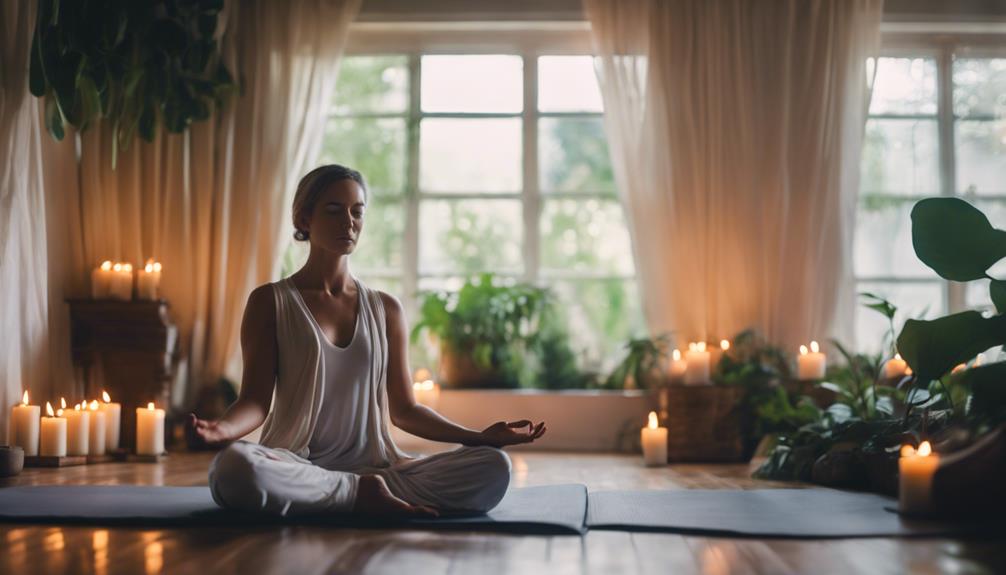Yoga For Flexibility

Yoga has long been celebrated as a holistic approach to wellness, encompassing physical, mental, and spiritual health. Among the numerous benefits of practicing yoga, one of the most sought-after is improved flexibility. In this comprehensive guide, we will dive into the various aspects of yoga for flexibility, exploring the best poses, techniques, tips, and the overall impact of yoga on your body’s mobility.
Understanding Flexibility and Its Importance
Flexibility refers to the range of motion available at a joint or group of joints. It plays a critical role in overall physical performance and health, contributing to better posture, reduced risk of injury, and enhanced athletic performance. Lack of flexibility can lead to tight muscles, decreased mobility, and an increased chance of strains or sprains. Incorporating yoga into your routine can help you enhance flexibility by stretching and strengthening muscles, ultimately promoting better physical health and well-being.
The Science Behind Yoga and Flexibility
Yoga for flexibility is not just a myth; it’s backed by science. When you practice yoga, you engage in a series of poses (asanas) that target various muscle groups. These stretches can help elongate muscles and improve joint mobility. Additionally, yoga promotes relaxation and mindfulness, which can lead to a reduction in muscle tension. Studies have shown that individuals who engage in regular yoga practice often experience a significant increase in flexibility compared to those who do not. Furthermore, the combination of stretching, breathing techniques, and meditation enhances overall muscle elasticity and joint function.
Top Yoga Poses for Increased Flexibility
There are numerous yoga poses specifically designed to improve flexibility. Here are some of the most effective asanas to incorporate into your routine:
1. Downward Dog (Adho Mukha Svanasana): This pose stretches the hamstrings, calves, and shoulders while strengthening the arms and legs.
2. Forward Fold (Uttanasana): A great way to stretch the spine, hamstrings, and calves, this pose encourages deep relaxation.
3. Pigeon Pose (Eka Pada Rajakapotasana): This pose is excellent for opening the hips and relieving tension in the lower back.
4. Butterfly Pose (Baddha Konasana): This seated pose stretches the inner thighs and groin, making it beneficial for hip flexibility.
5. Cobra Pose (Bhujangasana): It stretches the chest and spine while improving overall back flexibility.
Incorporating these poses into your yoga routine can significantly enhance your flexibility over time.
Creating a Consistent Yoga Routine
When it comes to yoga for flexibility, consistency is key. To maximize the benefits, aim to practice yoga at least two to three times a week. Start with a warm-up to prepare your muscles and joints, followed by a series of flexibility-focused poses. As you progress, gradually increase the duration and intensity of your practice. Listening to your body is crucial; don’t push yourself too hard, as this can lead to injuries. Instead, focus on gradual improvement, allowing your body to adapt to the increased range of motion.
Incorporating Breathwork into Your Practice
Breathwork, or pranayama, is an essential aspect of yoga that can enhance your flexibility. Breathing deeply and mindfully during your practice helps relax your body, allowing for deeper stretches. As you inhale, focus on expanding your ribcage and filling your lungs completely, and as you exhale, consciously release any tension in your muscles. This connection between breath and movement not only improves flexibility but also promotes relaxation and reduces stress, creating a more holistic yoga experience.
Common Mistakes to Avoid When Practicing Yoga for Flexibility
While practicing yoga for flexibility, it’s essential to be aware of common mistakes that can hinder your progress or lead to injury. Some pitfalls to avoid include:
1. Overstretching: Pushing your body beyond its limits can lead to strains and injuries. Always listen to your body and respect its boundaries.
2. Neglecting Warm-up: Skipping a proper warm-up can lead to tight muscles, making it harder to achieve deeper stretches.
3. Inconsistent Practice: Flexibility takes time to develop. Inconsistent practice will slow your progress.
4. Improper Alignment: Maintaining proper alignment during poses is crucial for avoiding injury and maximizing the benefits of each stretch.
By being mindful of these common mistakes, you can create a more effective and safe yoga practice.
The Role of Nutrition and Hydration in Flexibility
While yoga plays a significant role in enhancing flexibility, nutrition and hydration are equally important. A balanced diet rich in vitamins, minerals, and antioxidants supports muscle health and recovery. Foods high in omega-3 fatty acids, such as fish and seeds, can reduce inflammation and promote joint health. Staying hydrated is also crucial, as dehydration can lead to muscle cramps and reduced flexibility. Aim to drink plenty of water throughout the day and consider incorporating hydrating foods like fruits and vegetables into your meals.
Conclusion: Embrace the Journey to Greater Flexibility
Incorporating yoga into your routine can lead to significant improvements in flexibility, enhancing your overall physical health and well-being. By understanding the importance of flexibility, practicing effective yoga poses, maintaining consistency, and being mindful of your body’s needs, you can unlock your body’s potential. Remember, the journey to greater flexibility is unique to each individual; celebrate your progress and enjoy the transformative benefits of yoga for flexibility. Whether you’re a beginner or an experienced practitioner, there’s always room for growth and exploration on your yoga journey. Embrace the practice and watch as your flexibility flourishes!
With dedication and mindfulness, yoga for flexibility can become a rewarding part of your daily routine, leading to a healthier, more balanced life.